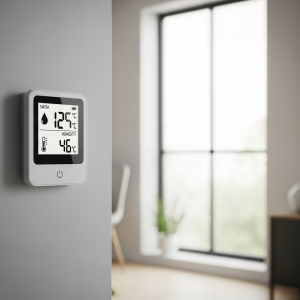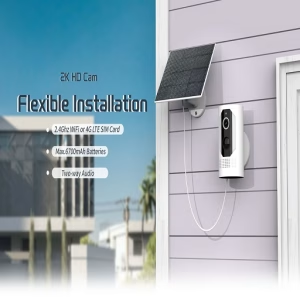Choosing Between Wireless AP Coverage and Wired Network Coverage: An In-Depth Analysis
In today’s hyper-connected world, network coverage is a critical consideration for businesses and homes alike. The debate between deploying Wireless Access Points (APs) versus traditional wired networks often emerges when designing an optimal network solution. Both options have their pros and cons, and understanding these is essential for making the right choice for your specific needs.

Understanding Wireless AP Coverage
Wireless APs are devices that allow Wi-Fi-enabled devices to connect to a wired network. They offer flexibility and mobility, making them ideal for environments where mobility is a priority. Here are some key advantages and disadvantages of wireless AP coverage:
Advantages of Wireless AP Coverage
- Mobility and Flexibility: Wireless networks allow users to move freely within the coverage area without losing connection. This is especially beneficial in settings like offices, campuses, and large public spaces.
- Easy Installation and Scalability: Wireless APs are typically easier to install than wired solutions. Adding more APs to expand coverage is straightforward, allowing for quick scalability as the network grows.
- Cost-Effective in Certain Scenarios: For buildings where running cables is expensive or impractical, wireless APs can be a more affordable option.
- Aesthetics: Without the need for extensive cabling, wireless networks maintain a cleaner and more aesthetically pleasing environment.
Disadvantages of Wireless AP Coverage
- Interference and Signal Quality: Wireless networks are subject to interference from other electronic devices and physical obstacles, which can degrade performance.
- Limited Bandwidth: Wireless connections often offer lower bandwidth compared to wired connections, which can be a drawback for high-demand applications.
- Security Concerns: Wireless networks are generally more vulnerable to security threats, making robust encryption and security measures essential.
- Dependence on Power: APs need a power source, which may complicate placement in certain environments.
Understanding Wired Network Coverage
Wired networks, typically using Ethernet cables, offer a stable and reliable means of connectivity. Here are some advantages and disadvantages of this approach:
Advantages of Wired Network Coverage
- Reliability and Stability: Wired connections tend to be more stable and less susceptible to interference. This makes them ideal for applications requiring consistent performance, such as video conferencing and data-intensive tasks.
- Higher Speeds: Wired networks generally provide higher data transfer speeds, making them suitable for environments with heavy bandwidth demands.
- Enhanced Security: Wired networks are inherently more secure, as physical access is required to connect to the network. This reduces the risk of unauthorized access.
- Lower Latency: For applications that require real-time data transmission, wired connections typically offer lower latency compared to wireless connections.
Disadvantages of Wired Network Coverage
- Installation Complexity: Running cables can be labor-intensive and costly, especially in established buildings where walls may need to be drilled or modified.
- Limited Mobility: Users are tethered to their workstations, which can hinder productivity in environments where mobility is crucial.
- Scalability Issues: Expanding a wired network can be more cumbersome than adding wireless APs, as it often requires physical infrastructure changes.
- Aesthetic Concerns: Visible cables can detract from the overall aesthetics of a space and may require additional management to keep organized.
Factors to Consider When Choosing Between Wireless and Wired Solutions
- User Mobility Requirements
If your users require the freedom to move around, a wireless AP solution may be the better choice. For example, in an office environment where employees often collaborate and move between spaces, the flexibility of wireless connectivity is invaluable. In contrast, for fixed installations, such as in data centers or manufacturing environments, wired solutions may be preferable.As technology continues to evolve, keeping abreast of new developments in both wired and wireless technologies will enable informed decision-making, ensuring that your network infrastructure remains robust, secure, and adaptable to future demands.
- Bandwidth and Performance Needs
Consider the types of applications that will be used on the network. High-demand applications, such as 4K video streaming, online gaming, or large file transfers, benefit from wired connections due to their higher speeds and lower latency. Conversely, if your network primarily supports light web browsing or email, wireless might suffice.
- Physical Environment
The physical layout of your space can significantly influence your decision. Environments with many physical barriers, such as thick walls or metal structures, may experience degraded wireless signals, making wired connections a better option. Conversely, open spaces with few obstructions may benefit from wireless flexibility.
- Budget Constraints
Budget is always a critical consideration. While wireless APs can be more cost-effective in some scenarios, installation costs for a wired network may be offset by long-term performance benefits. Analyzing both upfront and ongoing costs can provide a clearer picture.
- Security Requirements
In industries handling sensitive information, the enhanced security of wired networks may be non-negotiable. For environments with less stringent security needs, well-configured wireless networks with proper encryption may be adequate.
- Future Scalability
Consider how the network will need to evolve in the coming years. If rapid expansion is anticipated, wireless APs can offer more straightforward scalability. However, if you foresee the need for high-performance connections, investing in a robust wired infrastructure may yield long-term benefits.
Conclusion: A Hybrid Approach
Ultimately, the choice between wireless AP coverage and wired network coverage often comes down to specific needs and contexts. Many organizations find that a hybrid approach—utilizing both wired and wireless solutions—provides the best balance of performance, flexibility, and scalability.
For example, critical systems can be wired for stability and security, while common areas and meeting rooms can benefit from wireless connectivity. This allows users to enjoy the advantages of both systems, tailoring the network to meet diverse needs without compromising on performance or accessibility.




